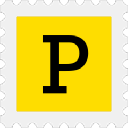On Launching A Membership Software
Hi there, I’m Ward Sandler the cofounder and CEO over at MemberSpace. Our mission is to help anyone build a sustainable membership business (without coding) anywhere on the internet! We do this by turning any part of your existing website into members-only with just a few clicks. People use us on Wordpress, Squarespace, Webflow, Wix, Weebly, Duda, Notion, HubSpot, and custom HTML sites.
Last year we 10x’d the amount of revenue our customers generated through our platform and we’re super proud to say we help people make millions of dollars every month via their memberships.

What's your backstory and how did you get into entrepreneurship?
So I actually met my cofounder Ryan in college at Steven’s Institute of Technology in Hoboken, NJ. We both majored in Business & Technology and ended up joining the same fraternity. After college, we were working at the same startup company called...

Download the report and join our email newsletter packed with business ideas and money-making opportunities, backed by real-life case studies.

Download the report and join our email newsletter packed with business ideas and money-making opportunities, backed by real-life case studies.

Download the report and join our email newsletter packed with business ideas and money-making opportunities, backed by real-life case studies.

Download the report and join our email newsletter packed with business ideas and money-making opportunities, backed by real-life case studies.

Download the report and join our email newsletter packed with business ideas and money-making opportunities, backed by real-life case studies.

Download the report and join our email newsletter packed with business ideas and money-making opportunities, backed by real-life case studies.

Download the report and join our email newsletter packed with business ideas and money-making opportunities, backed by real-life case studies.

Download the report and join our email newsletter packed with business ideas and money-making opportunities, backed by real-life case studies.
































